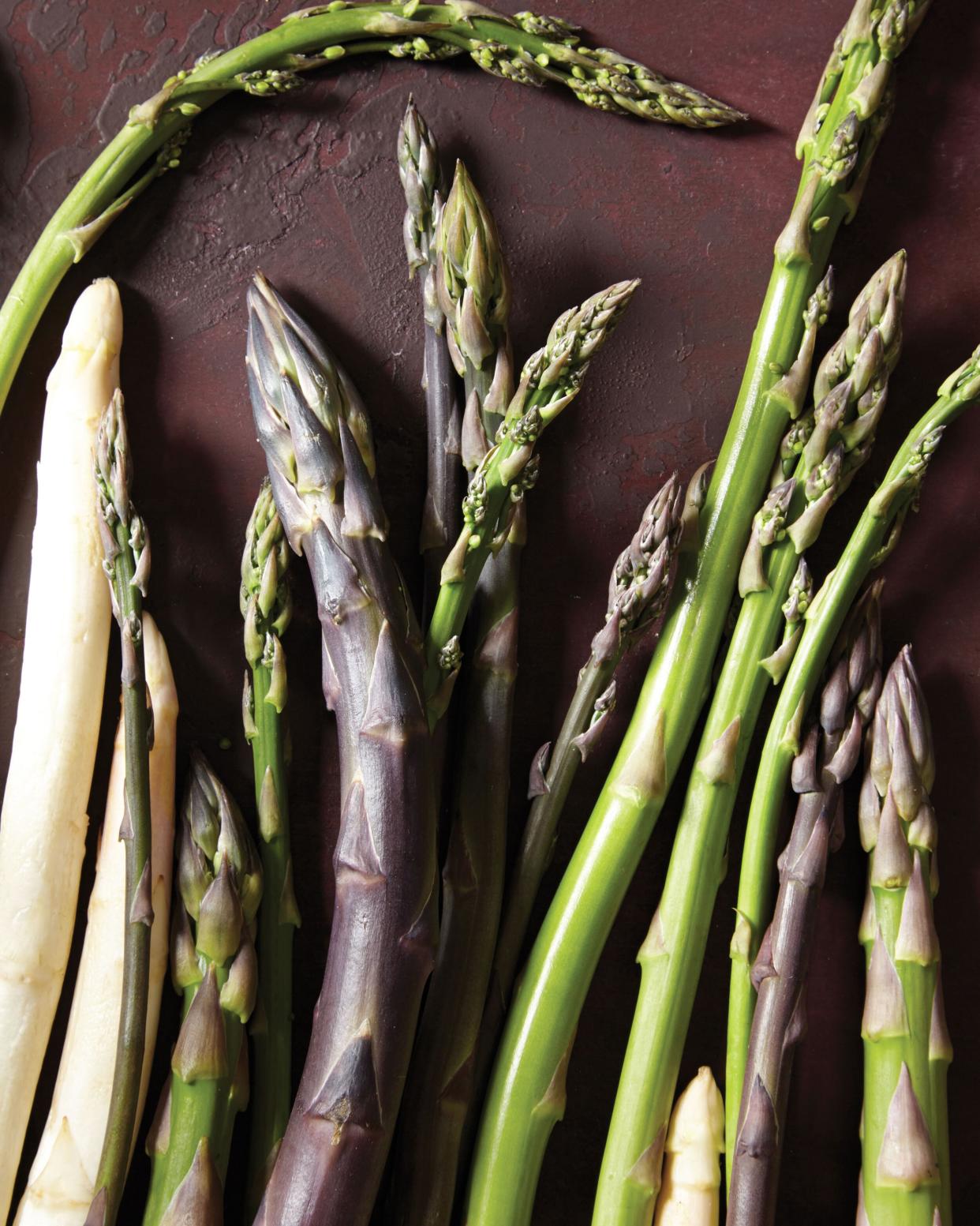The Best Way to Grow, Care for, and Harvest Asparagus at Home

Romulo Yanes
As an infinitely versatile spring vegetable, asparagus is a backyard garden essential: Use it in savory tarts, creamy soups, fresh salads, party-ready appetizer platters, or simple sides while you're waiting for the rest of your garden to yield its summer harvest. Discover several asparagus growing tips, ahead, so you can introduce these veggies into your space.
Related: Why You Should Start a Family Garden
How to Grow Asparagus
Few home gardeners plant asparagus from seed; most start with existing root systems divided from established plants, called crowns, which look like a collection of long, skinny tubes branching off a central nub. Plant your crowns about five inches deep and 12 to 18 inches apart, according to the University of California Small Farm Program in full sun, well-drained soil, and with the crown bud pointing up. Though the plant comes in male and female varieties, most sellers offer all-male iterations, which yield thicker stems and a more generous harvest, since the plant doesn't put energy toward making seeds. If you're the plan-ahead type, you can plant asparagus—a perennial—in the fall, and it will stay dormant until the spring; otherwise, plant the crowns in early spring for a March or April harvest, say Jess Brandeisky and Nick Delmar of Fernbrook Farms in New Jersey.
How to Grow White Asparagus
Though white asparagus, with its milder flavor, may seem like a specialty purchase at the supermarket, it's not: Traditional green asparagus turns white when grown in the dark, since, without sunlight, there's no photosynthesis. The simplest way to create white asparagus is with a blanching box: Use 1 x 12 cedar planks to build a 3 x 2 rectangle secured with three countersunk galvanized screws at each joint, and use two more 1 x 12 boards—each 36 inches long—to cover the top. This creates a bottomless box that you can place over your plants when they begin to sprout. Caulk or tape the seams between the boards inside so no light enters and mound up dirt around the bottom when you place it in your garden. Adding a handle to one of the long sides makes it easier to lift the box and check the progress of your stalks.
How and When to Harvest Asparagus
Experts recommend refraining from harvesting stalks during the first season and easing into a full yield over the following two years to prepare the plant for a decade—or more—in your garden. "Since they are such a long-term producer, it's going to take them a while to get settled," says Brandeisky. "They put so much energy into growing, so once you cut it back, it takes that much more energy away from the root system that's trying to establish itself." Mature plants will send up stalks that grow almost impossibly quickly: Brandeisky warns that you may need to cut stalks two or three times a day to catch them at their best (and yes, this means stalks that weren't ready when you left for work will be perfect for your Asparagus Soup by the time you get home). Remove the stalks by slicing them off cleanly at a 45-degree angle at—or just under—the soil, while keeping your knife clear of other buds growing nearby, or by snapping them off at a natural breaking point. Snapped-off stalks won't look quite as pretty on your plate, but you won't have to trim the woody, fibrous bottoms before prepping an Asparagus Tart.

